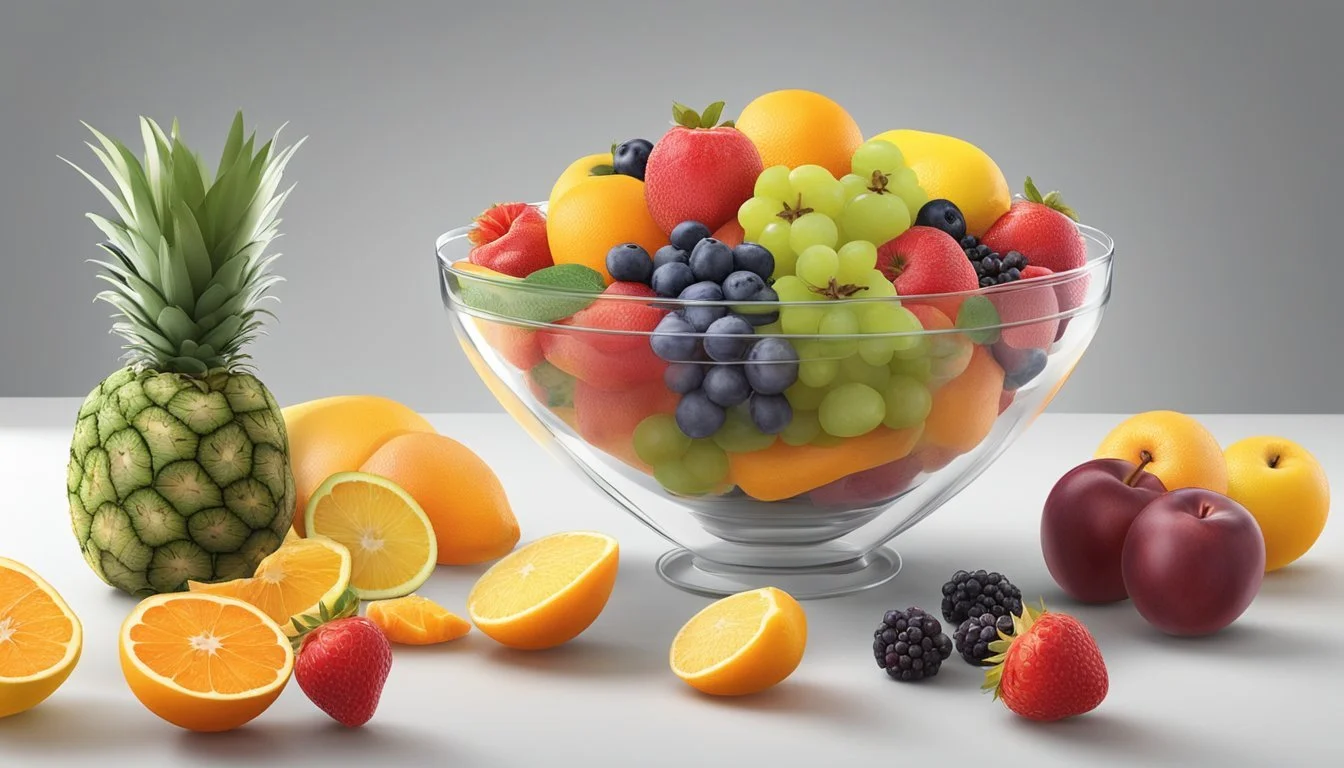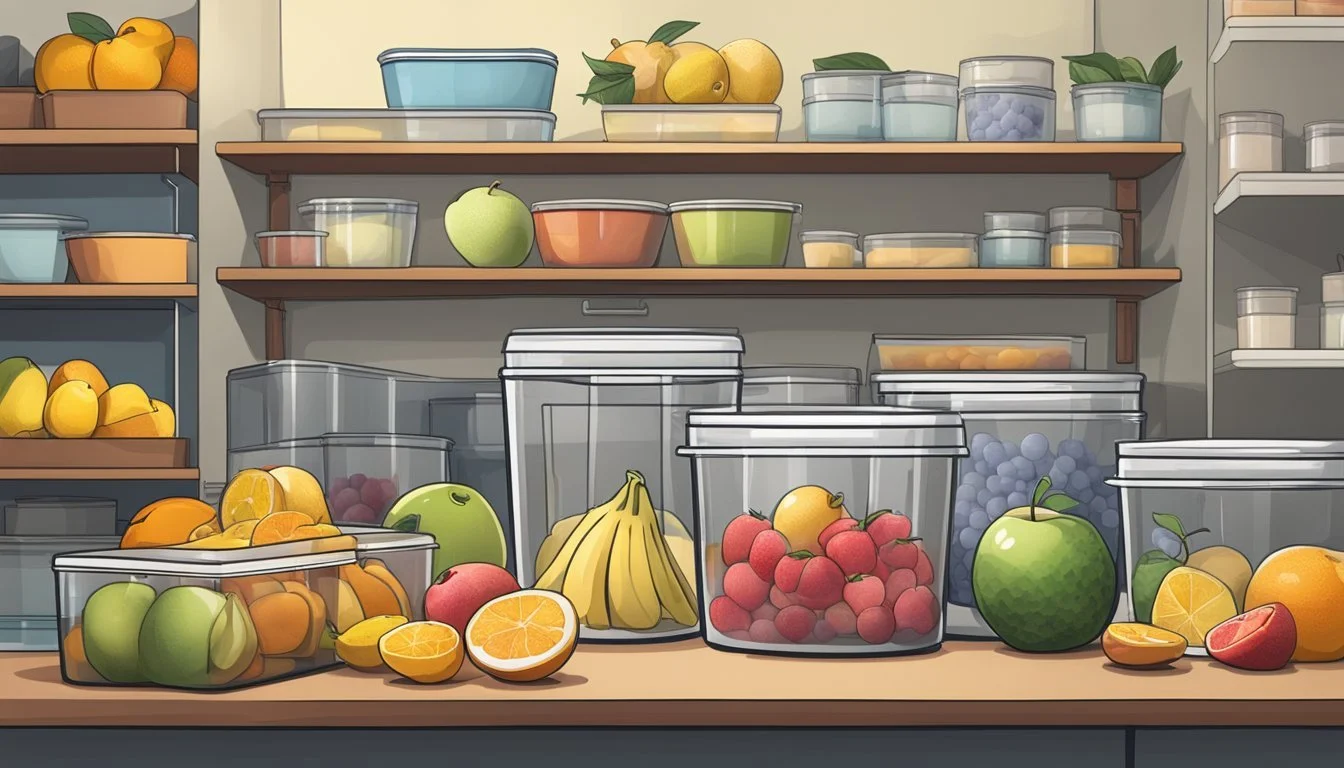Fresh vs. Freeze-Dried Fruit: Comparing Nutrition, Taste, and Convenience
Fruit is a nutritious and delicious part of a healthy diet. While fresh fruit is often considered the gold standard, other forms like dried and freeze-dried fruit have become increasingly popular. These alternatives offer convenience and longer shelf life, but how do they compare nutritionally?
Fresh fruit generally contains more vitamins and water than dried or freeze-dried versions, but all forms can contribute to a balanced diet. Fresh fruit provides natural hydration and fiber, while dried fruit offers concentrated nutrients in a smaller package. Freeze-dried fruit maintains much of its original nutritional value and texture when rehydrated.
The choice between fresh, dried, and freeze-dried fruit often comes down to personal preference, storage capabilities, and intended use. Each type has its place in a varied diet. Understanding the differences can help consumers make informed decisions about which fruit options best suit their needs and health goals.
Comparing Fresh and Dried Fruits
Fresh and dried fruits offer distinct nutritional profiles and portion considerations. Each type has unique characteristics that impact their nutrient density, calorie content, and serving sizes.
Nutritional Value Differences
Fresh fruits contain high water content, typically 80% or more. This contributes to their lower calorie density compared to dried fruits. Fresh options provide essential vitamins and minerals in their natural state.
Dried fruits have concentrated nutrients due to water removal. They offer higher levels of certain vitamins and minerals per weight. However, some nutrients like vitamin C may decrease during the drying process.
Fiber content remains relatively stable in both fresh and dried fruits. Dried fruits often have a higher sugar concentration, which can affect blood sugar levels more quickly.
Weight and Portion Size Considerations
Fresh fruits generally have larger serving sizes by weight due to their water content. A typical serving of fresh fruit ranges from 100-200 grams.
Dried fruits have smaller serving sizes, usually around 30 grams. This concentrated form means a small amount provides similar nutrients to a larger portion of fresh fruit.
Calorie content differs significantly. For example, a cup of fresh grapes contains about 62 calories, while a cup of raisins has over 400 calories.
Portion control is crucial with dried fruits due to their higher calorie density. It's easy to consume more calories from dried fruits without realizing it.
The Drying Process
Fruit drying methods remove moisture to preserve flavor and extend shelf life. The process concentrates sugars and affects nutritional content.
Methods of Drying Fruits
Sun drying is a traditional technique that exposes fruit to direct sunlight for several days. This method works well in hot, dry climates but can be inconsistent.
Oven drying uses controlled heat to remove moisture over 6-12 hours. It offers more consistency than sun drying but requires energy and attention.
Dehydrators circulate warm air to dry fruit evenly. They're efficient and allow precise temperature control.
Freeze-drying first freezes fruit, then uses a vacuum to sublimate ice directly into water vapor. This preserves shape and most nutrients.
Impact on Nutritional Quality
Drying concentrates calories and sugars as water is removed. A cup of dried fruit contains more calories than fresh.
Heat-based methods can degrade some vitamins, especially vitamin C. Freeze-drying better preserves nutrients but is more expensive.
Dried fruits retain fiber and minerals. They offer concentrated antioxidants compared to fresh fruit by weight.
Some nutrients become more bioavailable after drying. For example, lycopene in tomatoes increases with dehydration.
Sulfites, sometimes added to preserve color, may cause reactions in sensitive individuals.
Freeze-Drying Advantages and Considerations
Freeze-drying offers unique benefits for fruit preservation while maintaining nutritional value. This process also presents some technological complexities and dietary considerations.
Freeze-Dried Fruits in Diet
Freeze-dried fruits retain most of their nutritional qualities, including vitamin C, fiber, and antioxidants. They have a concentrated flavor and are lightweight, making them convenient for snacking or adding to recipes. The process removes water, which concentrates sugars, potentially increasing calorie density.
Freeze-dried products often don't require preservatives, appealing to health-conscious consumers. Their long shelf life makes them practical for emergency food supplies or outdoor activities. However, the concentrated nature can lead to overconsumption if portion sizes aren't monitored.
Some bioactive nutrients, like carotenoids, may be better preserved in freeze-dried fruits compared to other preservation methods. This can offer nutritional advantages for those seeking to maximize their intake of specific compounds.
Technological Aspects of Freeze-Drying
Freeze-drying involves sophisticated equipment and precise temperature control. The process starts by freezing the fruit, then reducing pressure to allow ice to sublimate directly into vapor. This gentle method helps preserve the fruit's structure and nutrients.
The technology allows for the production of crisp, lightweight fruits that rehydrate quickly. It's particularly effective for delicate berries and other fruits that don't fare well with traditional drying methods.
Freeze-drying is more energy-intensive than other preservation techniques, which can impact production costs. The equipment requires significant initial investment, but the resulting products have a long shelf life, potentially offsetting expenses over time.
Quality control is crucial in freeze-drying to ensure consistent results and maintain the fruit's nutritional profile. Proper packaging is essential to prevent moisture reabsorption and maintain the product's crispness and quality.
Health Implications
Fresh and freeze-dried fruits have distinct health impacts. The processing methods affect nutrient content, sugar concentration, and potential disease risks.
Risk Factors for Chronic Diseases
Fruit consumption, whether fresh or freeze-dried, is linked to reduced risks of chronic diseases. Both forms contain beneficial compounds like phenols and fiber, which may help prevent heart disease, diabetes, and certain cancers.
Freeze-dried fruit retains most nutrients found in fresh fruit. It often has higher concentrations of vitamins and minerals due to water removal.
Fresh fruit's high water content aids hydration and provides a feeling of fullness. This may help with weight management, potentially lowering obesity-related disease risks.
Effects of Sugars and Added Sugars
Freeze-dried fruit typically contains more concentrated sugars than fresh fruit. A serving of freeze-dried fruit may have higher calorie and sugar content compared to its fresh counterpart.
Natural fruit sugars, primarily fructose, are present in both forms. These sugars provide quick energy but should be consumed in moderation.
Some dried fruits have added sugars, increasing their calorie content. This can potentially contribute to weight gain and related health issues if consumed excessively.
Fresh fruits contain natural sugars balanced with fiber, which helps slow sugar absorption. This can lead to better blood sugar control compared to consuming concentrated fruit sugars.
Usage in Culinary and Convenience
Fresh and freeze-dried fruits offer versatile options for culinary applications and convenient snacking. Their unique properties lend themselves to different uses in the kitchen and on-the-go.
Inclusion in Recipes
Freeze-dried fruits add intense flavor and vibrant color to various dishes. In baked goods, they can be crushed and mixed into batters for muffins, cakes, and cookies. Sprinkled on top of oatmeal or yogurt, they provide a crunchy texture contrast. Smoothies benefit from the concentrated fruit flavor without added moisture.
Chefs use freeze-dried fruit powders to create colorful garnishes or flavor-packed fruit sauces. These powders dissolve easily in liquids, making them ideal for flavoring teas or enhancing cocktails. Fresh fruits, while more limited in shelf life, offer juiciness and natural sweetness in salads, desserts, and savory dishes.
On-the-Go Snacking
Freeze-dried fruits excel as portable snacks. Their light weight and long shelf life make them ideal for travel, hiking, or busy lifestyles. Unlike fresh fruits, they don't bruise or spoil quickly. The freeze-drying process preserves nutrients while creating a satisfying crunch.
Many people enjoy freeze-dried fruits as part of trail mix or as a topping for cereal. They can be eaten straight from the package without preparation. Fresh fruits require more careful handling but offer hydration and a juicy eating experience.
Some consumers prefer the chewy texture of traditionally dried fruits for snacking. However, freeze-dried options provide a unique crispy alternative that many find appealing. Both types can be easily incorporated into homemade snack mixes or eaten on their own.
Preservation and Shelf Life
Freeze-dried fruits offer exceptional longevity compared to fresh fruits, with minimal nutrient loss during processing. Proper storage techniques are crucial for maintaining quality over time.
Shelf Stability of Dried Fruits
Freeze-dried fruits boast an impressive shelf life, often lasting 25-30 years when stored below 75°F (24°C). This extended longevity stems from the removal of 98-99% of moisture during the freeze-drying process.
Unlike fresh fruits that spoil quickly, freeze-dried products don't require refrigeration. They remain stable at room temperature when kept in airtight containers away from light and moisture.
Conventional dried fruits typically last 6-12 months. While not as long-lasting as freeze-dried options, they still offer significantly extended shelf life compared to fresh produce.
Maintaining Quality Over Time
Proper storage is key to preserving the quality of freeze-dried fruits. Airtight containers protect against moisture absorption, which can lead to spoilage and nutrient degradation.
Cool, dark storage areas help maintain color, flavor, and nutritional value. Exposure to heat or light can cause deterioration over time.
Oxygen absorbers or vacuum-sealed packaging further extend shelf life by preventing oxidation. This helps preserve the fruit's natural color and flavor profile.
When rehydrating freeze-dried fruits, use clean water and consume promptly. Once reconstituted, they should be treated like fresh fruit and refrigerated if not eaten immediately.
Environmental and Storage Considerations
Freeze-drying and fresh fruit storage have distinct environmental impacts and preservation requirements. The processing methods affect fruit structure and nutrient retention differently.
Effects of Drying on Fruit Integrity
Freeze-drying alters fruit structure significantly. The process removes water from fibrous cells in a vacuum chamber, preserving shape and flavor. This method maintains most nutrients except fiber and vitamin C.
Fresh fruit retains its natural water content and cellular structure. It requires refrigeration for short-term storage to slow spoilage.
Freeze-dried fruit has a much longer shelf life. When stored properly in airtight containers, it can last up to 25-30 years at temperatures below 75°F (24°C).
Fresh fruit typically lasts days to weeks, depending on the type and storage conditions. Proper handling and temperature control are crucial for maximizing freshness.
Freeze-dried fruit is lightweight and doesn't require refrigeration, reducing transportation and storage energy costs. However, the initial processing is energy-intensive.
Fresh fruit has a lower processing footprint but higher transportation and storage energy requirements due to its perishable nature and water weight.





